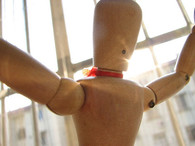- Home
- About Us
- TSPT Academy
- Online Courses
-
Resources
- Newsletter
- Business Minded Sports Physio Podcast
- Day in the Life of a Sports PT
- Residency Corner
-
Special Tests
>
-
Cervical Spine
>
- Alar Ligament Test
- Bakody's Sign
- Cervical Distraction Test
- Cervical Rotation Lateral Flexion Test
- Craniocervical Flexion Test (CCFT)
- Deep Neck Flexor Endurance Test
- Posterior-Anterior Segmental Mobility
- Segmental Mobility
- Sharp-Purser Test
- Spurling's Maneuver
- Transverse Ligament Test
- ULNT - Median
- ULNT - Radial
- ULNT - Ulnar
- Vertebral Artery Test
- Thoracic Spine >
-
Lumbar Spine/Sacroiliac Joint
>
- Active Sit-Up Test
- Alternate Gillet Test
- Crossed Straight Leg Raise Test
- Extensor Endurance Test
- FABER Test
- Fortin's Sign
- Gaenslen Test
- Gillet Test
- Gower's Sign
- Lumbar Quadrant Test
- POSH Test
- Posteroanterior Mobility
- Prone Knee Bend Test
- Prone Instability Test
- Resisted Abduction Test
- Sacral Clearing Test
- Seated Forward Flexion Test
- SIJ Compression/Distraction Test
- Slump Test
- Sphinx Test
- Spine Rotators & Multifidus Test
- Squish Test
- Standing Forward Flexion Test
- Straight Leg Raise Test
- Supine to Long Sit Test
-
Shoulder
>
- Active Compression Test
- Anterior Apprehension
- Biceps Load Test II
- Drop Arm Sign
- External Rotation Lag Sign
- Hawkins-Kennedy Impingement Sign
- Horizontal Adduction Test
- Internal Rotation Lag Sign
- Jobe Test
- Ludington's Test
- Neer Test
- Painful Arc Sign
- Pronated Load Test
- Resisted Supination External Rotation Test
- Speed's Test
- Posterior Apprehension
- Sulcus Sign
- Thoracic Outlet Tests >
- Yergason's Test
- Elbow >
- Wrist/Hand >
- Hip >
- Knee >
- Foot/Ankle >
-
Cervical Spine
>
- I want Financial Freedom
- I want Professional Growth
- I want Clinical Mastery
 Tissue Adaptation to Physical Stress: a proposed "Physical Stress Theory" to guide Physical Therapy Practice, Education and Research, an article by Mueller and Maluf, is a must read for any physical therapy student. At SLU, I was required to read it during my first semester in the program. At the time, I did not fully understand the full extent or importance of the article. Mueller and Maluf touch on several key concepts that directly relate to our patient care. The premise behind the Physical Stress Theory (PST) is "that changes in the relative level of physical stress cause a predictable adaptive response in all biological tissues." When stresses are placed on a particular structure due to movement or posture for example, our bodies tissues must adapt to these stresses. Stress can be defined by Magnitude x Time x Direction, and it is a combination of these 3 factors that will determine our bodies response. Our goal as physical therapists is to identify patterns that lead to excessive stresses and teach the patient proper movement strategies to prevent further tissue injuries. After identifying the problem, we need to decrease pain and perceived level of disability, and then focus on increasing activity tolerance in the new pain-free movement pattern. During any initial evaluation, think about a) What factors are causing excessive stress (environmental, behavioral, etc.) and b) How can these factors be modified? A few crucial take-home points from the PST: -Movement is a significant source of physical stress. Depending on how we move can have either detrimental or beneficial effects on tissue injury. -4 Fundamental tissues that undergo stress regularly are Epithelial, Connective, Muscular, and Nervous tissue. -5 Qualities of physical stress include: Decreased stress tolerance, Maintenance (homeostasis), Increased stress tolerance (tissue overload), Injury, and Death. The article goes into great detail on each of these points. -Stress will have different effects on tissues whether it is tensile, compressive, shearing, or torsional stress. Regardless which type of stress is present, inflammation will occur immediately following tissue injury. -Postural deviations are one of the most common causes of musculoskeletal pain. -Tissues atrophy at a much faster rate than they hypertrophy. Muscle force production losses can be between 6-40% in 4-6 weeks time. -Similar to muscles, nerves can become overused due to malalignment and postural deficits. This is commonly seen in carpal tunnel sydrome and lumbar spinal stenosis. Bottom Line: Good Alignment + Good Movement = Good Musculoskeletal Health. Factors such as posture, age, movement patterns, psychological factors and environmental factors all influence this equation. It is our goal to identifty these factors to allow for normal movemen Mueller and Maluf. Tissue Adaptation to Physical Stress: a proposed "Physical Stress Theory" to guide Physical Therapy Practice, Education and Research. Physical Therapy. 2002. 84.4: 383-403. Web. 2010.
3 Comments
4/9/2014 04:11:56 am
Thank you for breaking down how nerves respond to physical stresses.
Reply
Calvin
6/20/2022 02:03:21 am
How do you maintain a specific adaptation
Reply
Ethan Mitchell, CSCS, SPT
7/6/2022 12:54:05 pm
Hi, it seems to me that you are twisting the words of the hallmark study. The authors of the study do not state and actually deemphasize your claim that "Postural deviations are one of the most common causes of musculoskeletal pain."
Reply
Leave a Reply. |
Dr. Brian Schwabe's NEW Book in partner with PaleoHacks!
Learn residency-level content on our
Insider Access pages We value quality PT education & CEU's. Click the MedBridge logo below for TSPT savings!Archives
July 2019
Categories
All
|






 RSS Feed
RSS Feed